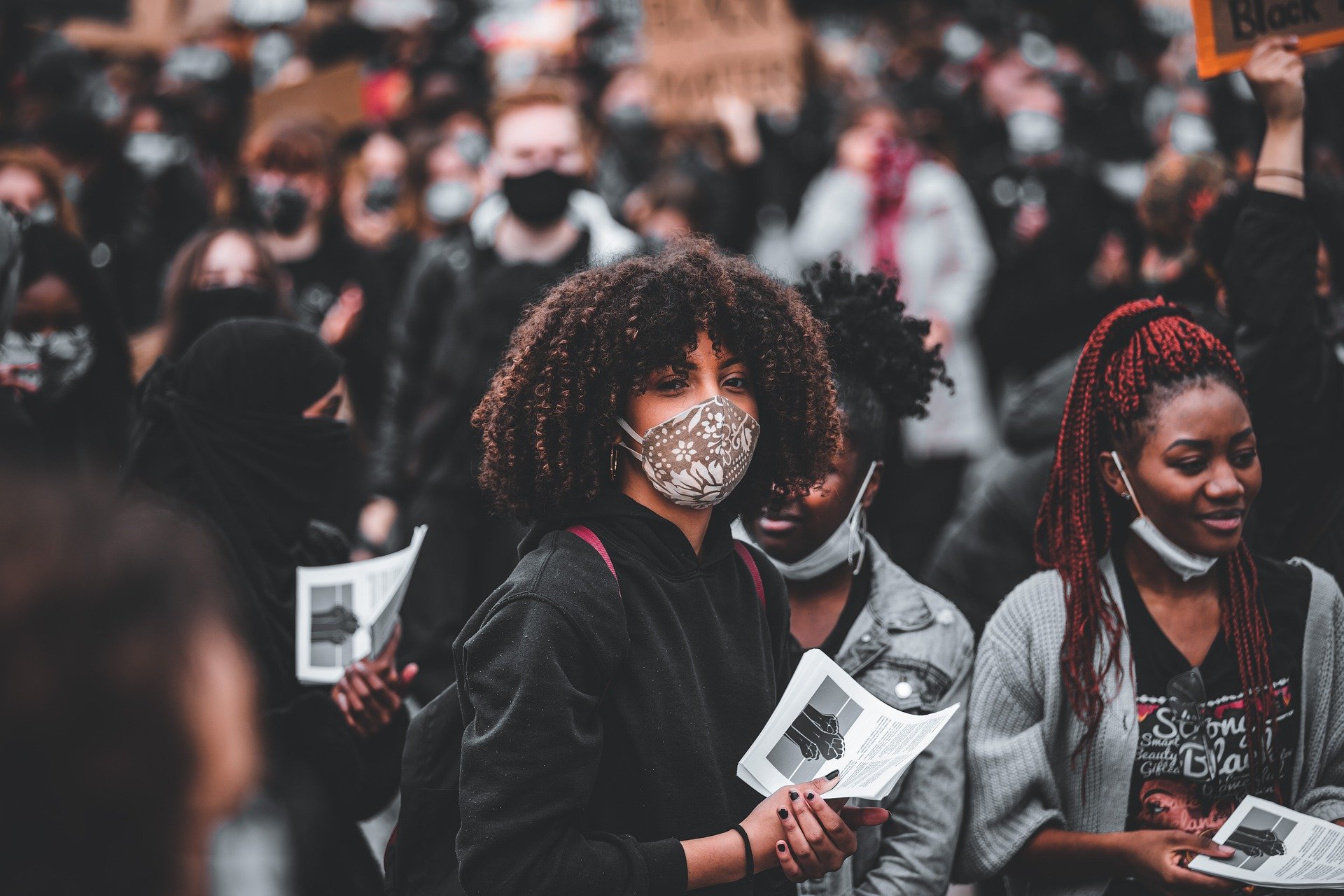Everyone in the world is facing the challenges and changes presented by the COVID-19 pandemic. But people of color may face additional barriers to staying healthy.
A group of researchers from the University of Connecticut Department of Communication studied people of color’s attitudes and behaviors related to COVID-19 through the Institute for Collaboration on Health, Intervention and Policy’s (InCHIP) Rapid Response seed funding program.
After seeing a viral tweet in which a Black man expressed discomfort wearing makeshift face coverings, Katrina Webber, a Ph.D. student and graduate assistant, wanted to investigate the topic.
The tweet came out in early April, when it was difficult for those not working in health care to access surgical masks. While many people used bandanas or other similar objects, this raised concerns for some people of color, who feared wearing bandanas over their faces would lead to them being stereotyped as having gang affiliations, or otherwise racially profiled.
“The conversations coming out of that tweet were very troubling and problematic, and that was something I was interested in learning about and exploring more,” Webber says.
Webber reached out to three faculty members in the Department of Communication: Sara Stifano, assistant professor in-residence; Stephen Stifano, associate professor in-residence; and assistant professor Shardé Davis. Davis studies race, gender, and communication, while Sara and Stephen Stifano had performed previous research on mask-wearing
The group collected data in May, around the same time protests over racial injustice and police brutality began to spread across the country.
“COVID-19 was really the second pandemic the United States was experiencing,” Davis says. “We have always experienced a very severe pandemic of racism, and anti-Black racism, specifically in this country.”
The researchers used the established Health Belief Model to measure respondents’ beliefs about their susceptibility to the virus, the severity of COVID-19, and their self-efficacy in relation to their ability to engage in behaviors like wearing a mask.
“We accept the fact the pandemic is real and it’s threatening,” Sara Stifano says. “But then we have individuals who don’t feel comfortable wearing a mask, or see a barrier to wearing a mask unrelated to health.”
The researchers also asked questions about respondents’ racial identity and experiences with everyday racism.
“It would have been irresponsible for us not to consider racial identity and how that goes hand-in-hand with COVID and health,” Davis says.
Based on preliminary data analyses, the researchers did not find strong difference in these factors between Black, Latino, and Asian communities.
Webber says these results may be a result of their sample in which a majority of respondents had at least a bachelor’s degree, and 35% make at least $60,000 a year.
“Our initial thought is that aspects of privilege could buffer some effects we expected to see in the data, since they may have had access to more resources like proper masks and information that could impact their feelings about COVID, and even more importantly, could impact their experiences of everyday racism and racial profiling,” Webber says.
The researchers were initially interested in how racist attitudes toward Black and Latino people affect their COVID-19-related behaviors. But Asian respondents also recounted experience with prejudice, as this group has faced harassment because the virus happened to originate in China.
“There is still this level of fear of going out in public for Asian folks, just as we expected for Black and Brown folks,” Webber says. “The issue is that there may not be group differences that we can see from our preliminary analysis because all parties are feeling similar in terms of their fear of racial discrimination, but perhaps for slightly different reasons.”
The researchers also found a connection between mental health and health beliefs. Those who reported having more negative mental health days also felt the virus was more severe, they were more susceptible to it and they had lower self-efficacy. This kind of correlation did not appear as strongly for physical health.
The researchers plan to continue their analyses and consider factors such as geographic location. Their sample captures more than 40 states and individuals in urban and rural areas. They also plan to consider education, political affiliation and media preferences in further analyses of the data.
“It’s interesting and useful to look at our data collection in various communities,” Sara Stifano says.
While all the researchers’ original hypotheses have not been fully supported by the data in the ways they expected, they have seen other connections between COVID-19 and the experiences of people of color in the United States.
“A lot of the qualitative data we gathered corroborates some of the overall themes for my initial interest in this topic — the systemic racism in this country,” Webber says.
While this study only looked at mask wearing, Davis emphasizes the connections between race and health will remain relevant for things like the COVID-19 vaccine and beyond.
“It’s masks today, but there will be other health-related questions in the months and years to come,” Davis says. “This issue of race-based factors that affect health decisions will rear its head again.”
Follow UConn Research on Twitter & LinkedIn.



